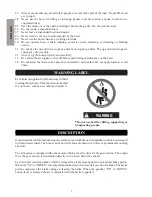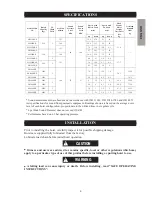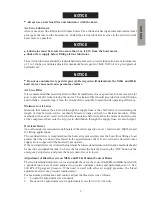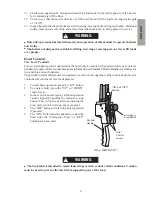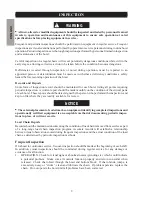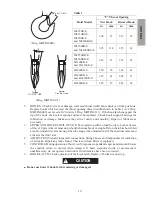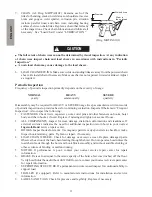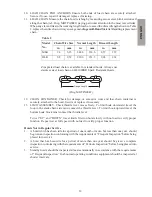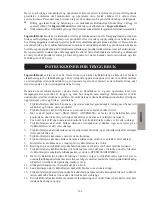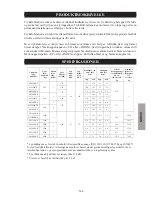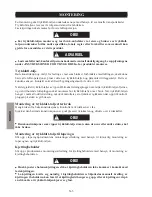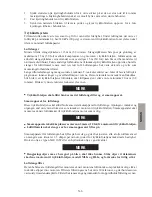
ENGLISH
Hoist
The supporting structures and load-attaching devices used in conjunction with this hoist must
provide adequate support to handle all hoist operations plus the weight of the hoist and attached
equipment. This is the customer’s responsibility. If in doubt, consult a registered structural engineer.
On HLK hoists remove the solid plug located on top of the hoist and install the attached vent plug
prior to using the hoist. When the hoist is in its normal level position check that the gear case oil level
is at the check plug on the side of the gear box.
Hook Mounted Hoist Installation
Place hook over mounting structure. Make sure hook latch is engaged.
Ensure the supporting member rests completely within the saddle of the hook and is centered directly
above the hook shank.
CAUTION
•
Do not use a supporting member that tilts the hoist to one side or the other.
Trolley Mounted Hoist Installation
Refer to trolley manufacturers installation information to safely install the trolley and attach the
hoist.
Chain Container
When installing a chain container, refer to the manufacturers installation Instructions for Chain
Containers.
CAUTION
•
Make certain to adjust the balance chain so that the chain container does not contact the load
chain.
•
Allow chain to pile naturally in the chain container. Piling the chain carelessly into the
container by hand may lead to kinking or twisting that will jam the hoist.
1.
Check the chain container size to make sure the length of load chain is within the capacity of
the chain container. Replace with a larger chain container, if required.
2.
Attach the chain container to the hoist.
3.
Run bottom block to lowest point and run hoist in up direction to feed the chain back into the
container.
Air System
The supply air must be clean, lubricated and free from water or moisture. A minimum of 6.3 bar/
630 kPa (90 psig) at the hoist motor is required, during operation to provide rated hoist performace.
Air Lines
The minimum allowable hose size is 13 mm (1/2 in). Hose size is based on a maximum of 15 m
(50 ft) between the air supply and the hoist motor. Contact your nearest distributor for recommended
air line sizes for distances greater than 15 m (50 ft). Before making final connections to hoist inlet,
all air supply lines should be purged with clean, moisture free air. Supply lines should be as short
and straight as installation conditions will permit.
Long transmission lines and excessive use of fittings, elbows, tees, globe valves etc. cause a
reduction in pressure due to restrictions and surface friction in the lines. If quick-disconnect fittings
are used at the inlet of the hoist, they must have at least a 10 mm (3/8 in) air passage. Use of smaller
fittings will reduce performance.
5




